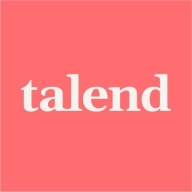

Talend Open Studio and StreamSets compete in the data integration and ETL category. Talend Open Studio holds a slight advantage with its flexibility and comprehensive connector capabilities.
Features: Talend Open Studio offers flexibility and a wide range of connectors, boasting powerful integration and customization capabilities. It is user-friendly for both technical and non-technical users. StreamSets features a visually intuitive design for building data pipelines, focusing on real-time processing and data drift resilience. It requires minimal coding, making it accessible to users across various platforms.
Room for Improvement: Talend Open Studio could enhance its installation configuration, profiling perspective, and technical support. Users experience issues with resource consumption and desire an improved interface. StreamSets needs improvements in its GUI, error handling, and security features. It could benefit from more comprehensive documentation and a pricing model better suited to smaller enterprises.
Ease of Deployment and Customer Service: Talend Open Studio operates in on-premises and hybrid environments but relies heavily on community forums for support, with mixed reviews on tech support responsiveness. StreamSets offers broad deployment flexibility in cloud environments, with customer service satisfaction varying based on the support level purchased.
Pricing and ROI: Talend Open Studio provides a free open-source version beneficial for small-scale deployments, but its enterprise features are costly. StreamSets is effective for larger enterprises but is expensive, posing accessibility challenges for smaller companies. Both solutions deliver notable ROI by streamlining operations, though StreamSets' pricing may not favor smaller enterprises.
| Product | Market Share (%) |
|---|---|
| Talend Open Studio | 3.2% |
| StreamSets | 1.5% |
| Other | 95.3% |


| Company Size | Count |
|---|---|
| Small Business | 9 |
| Midsize Enterprise | 2 |
| Large Enterprise | 11 |
| Company Size | Count |
|---|---|
| Small Business | 22 |
| Midsize Enterprise | 13 |
| Large Enterprise | 18 |
StreamSets is a data integration platform that enables organizations to efficiently move and process data across various systems. It offers a user-friendly interface for designing, deploying, and managing data pipelines, allowing users to easily connect to various data sources and destinations. StreamSets also provides real-time monitoring and alerting capabilities, ensuring that data is flowing smoothly and any issues are quickly addressed.
Talend Open Studio is a free, open source ETL tool for data integration and Big Data. The solution enables you to extract diverse datasets and normalize and transform them into a consistent format which can be loaded into a number of third-party databases and applications.
Talend Open Studio Features
Talend Open Studio has many valuable key features. Some of the most useful ones include:
Talend Open Studio Benefits
There are several benefits to implementing Talend Open Studio. Some of the biggest advantages the solution offers include:
Reviews from Real Users
Below are some reviews and helpful feedback written by PeerSpot users currently using the Talend Open Studio solution.
Elio B., Data Integration Specialist/CTO at Asset messages, says, "The solution has a good balance between automated items and the ability for a developer to integrate and extend what he needs. Other competing tools do not offer the same grade of flexibility when you need to go beyond what is provided by the tool. Talend, on the other hand, allows you to expand very easily."
A Practice Head, Analytics at a tech services company mentions, “The data integration aspect of the solution is excellent. The product's data preparation features are very good. There's very useful data stewardship within the product. From a technical standpoint, the solution itself is pretty good. There are very good pre-built connectors in Talend, which is good for many clients or businesses, as, in most cases, companies are dealing with multiple data sources from multiple technologies. That is where a tool like Talend is extremely helpful.”
Prerna T., Senior System Executive at a tech services company, comments, “The best thing I have found with Talend Open Studio is their major support for the lookups. With Salesforce, when we want to relate our child objects to their parent object, we need to create them via IDs. Then the upsert operation, which will allow you to relate a child object to the event, will have an external ID. That is the best thing which keeps it very sorted. I like that.”
An Implementation Specialist, Individual Contributor at a computer software company, states, “I can connect with different databases such as Oracle Database or SQL Server. It allows you to extract the data from one database to another. I can structure the data by filtering and mapping the fields.” He also adds, “It is very user-friendly. You need to know the basics of SQL development or SQL queries, and you can use this tool.”
PeerSpot user Badrakh V., Information System Architect at Astvision, explains, "The most valuable features are the ETL tools."
We monitor all Data Integration reviews to prevent fraudulent reviews and keep review quality high. We do not post reviews by company employees or direct competitors. We validate each review for authenticity via cross-reference with LinkedIn, and personal follow-up with the reviewer when necessary.